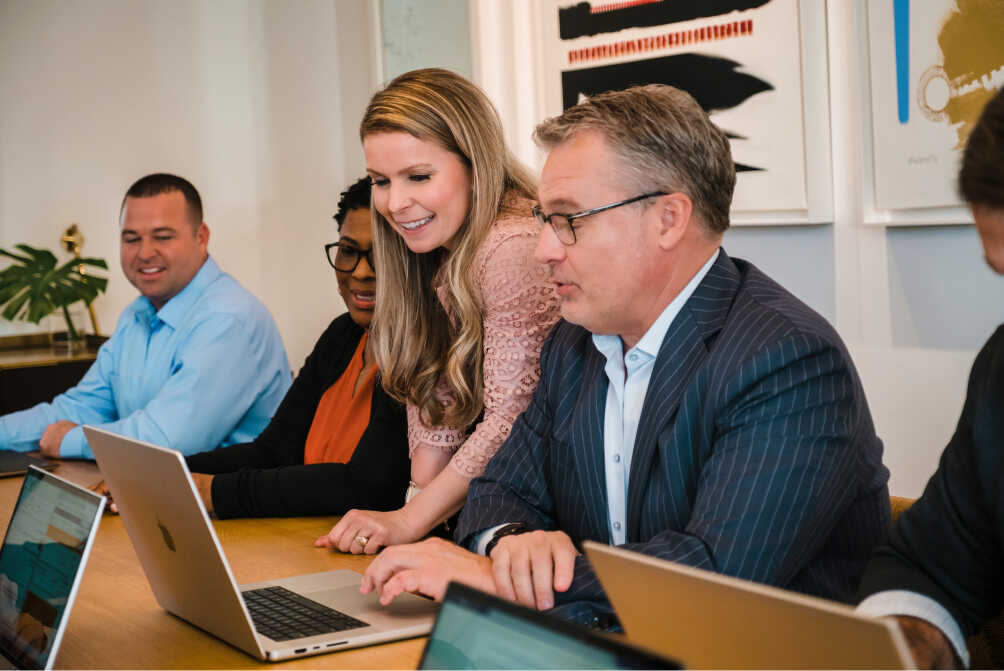Managed Review
We are your agents, not your gatekeepers.
Take something people already know.
Do it better than they thought it could be done.
And treat them better than they knew they could be treated.
This approach comes from restaurant empresario Danny Meyer. By contrast, our industry has a reputation for filling document reviews with nameless, faceless attorneys seen as disposable labor sources. And yet, we have seen legal strategies pivot radically based on the insights our people find in the chaos of mountains of data.
Who do you trust in your documents?

What our customers can expect from us:
You can expect
Scoping and alignment
We’re staged to handle any matter size – from one megabyte to one petabyte. No matter type, complexity, or schedule fazes us: litigation, regulatory, due diligence, compliance, merger control, internal investigations. We will review on our platform or yours. We’ve got your back.
You can expect
Workflow expertise.
Our customers enjoy peace of mind knowing their projects are run by attorneys and technologists who understand the bigger picture and deliver the outcomes you need. What outcomes? Production candidacy, accelerated fact development and knowledge transfer, service-ready privilege logs, defensible redactions, deposition and motion support, foreign language – and everything else.
You can expect
Reporting.
Many vendors deliver reports, but Level Legal’s output covers not only the past, but also the present and future. A 360 degree perspective. Our approach eliminates surprises and puts you back in control of your matter.
You can expect
Retrospective assesments.
After every matter, we meet with customers to receive and give feedback on the three P’s of project review: planning, performance, and perfecting. That last point in particular helps us continue to elevate our performance.
Related Blogs & Articles
-

Four Ways to Avoid the Hidden Costs of Bargain-Priced eDiscovery
By Daniel Bonner As you think about the price you’re comfortable paying for review services, consider the value you want and what expenses you may be incurring downstream that may not be covered. Many of my conversations with customers needing eDiscovery services begin with questions about our hourly rates. As we discuss pricing, I always raise other considerations that can move the total project cost needle in a significant way, often...
-

Cut Four Hidden Costs With an eDiscovery ‘Dream Team’
eDiscovery is the most expensive part of litigation. The American Bar Association estimates that document review alone accounts for more than 80 percent of total litigation cost. And though the most frequent misstep in eDiscovery management is a lack of strategic planning, many law firms and legal departments still fail to plan in this area. It doesn’t have to be this way. By following some best practices – namely developing your own eDiscovery...
-

Cut Four Hidden Costs With an eDiscovery ‘Dream Team’
eDiscovery is the most expensive part of litigation. The American Bar Association estimates that document review alone accounts for more than 80 percent of total litigation cost. And though the most frequent misstep in eDiscovery management is a...
-

December 7 Webinar: Why Culture Matters for Women in eDiscovery
If you’re a woman looking for a job in eDiscovery or already in an eDiscovery job – pretty comprehensive, right? – Level Legal has a new webinar for you. The details: Culture Counts: How Women Can Find and Create an Accommodating eDiscovery...
-

Culture Counts: How To Find and Create an Accommodating eDiscovery Environment
Women in eDiscovery provide opportunities for women to grow personally and professionally. This video discusses how women can find a place of work accommodating their needs for eDiscovery.


